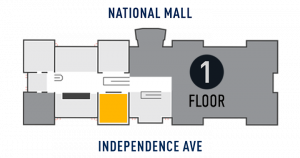Born in France in 1870, little is known of the early career of Ernest Montaut, but he probably entered the field as an employee of a Paris lithographer. He recognized the excitement generated by early motor racing and aviation and developed his skills as an artist in the portrayal of motor and aeronautical themes using the pochoir lithographic process. His prints provide a romantic view of the impact of technology on early 20th century France.
This print is one of those produced by Ernest and Marguerite Monaut for Mabileau & Co. The prints were all produced by the pochoir process in which the outlines for each image were drawn onto lithographic stones and printed. Using these uncolored prints as a template, elaborate stencils were cut for each colour. Watercolour was then brushed onto the image through the stencil. The colouring process was quite complex, with each print taking several days to produce. It was also quite labour intensive, so Montaut employed a group of artists, including H L Roowys, Nevil and Campion, to assist in the coloring. Montaut's wife Marguerite, also an accomplished artist, joined him in his work producing not only racing prints but also developing a fine series of aviation prints commemorating such events as the first flights, air races and record attempts. While Marguerite Montaut works were occasionally signed "M. Montaut", she also used the name "Gamy", an anagram for Magy.
Display Status
This object is on display in Wright Brothers & The Invention of the Aerial Age at the National Air and Space Museum in Washington, DC.

Object Details
Country of Origin
France
Type
ART-Prints, Original
Medium
Lithograph on Paper, Montaut, Wright au Camp d'Auvours
Physical Description
Wright au camp d'auvours, 1908; Aerp / Wright plane in flight over a tree-lined field.
Dimensions
2-D - In Frame (H x W x D): 59.7 x 102.9cm (23 1/2 x 40 1/2 in.)
2-D - Unframed (H x W): 39.4 x 82.6cm (15 1/2 x 32 1/2 in.)
Inventory Number
A19800016000
Credit Line
No credit line
Data Source
National Air and Space Museum
Restrictions & Rights
Usage conditions apply
For more information, visit the Smithsonian’s Terms of Use.